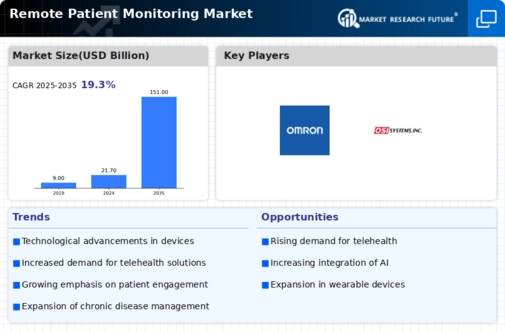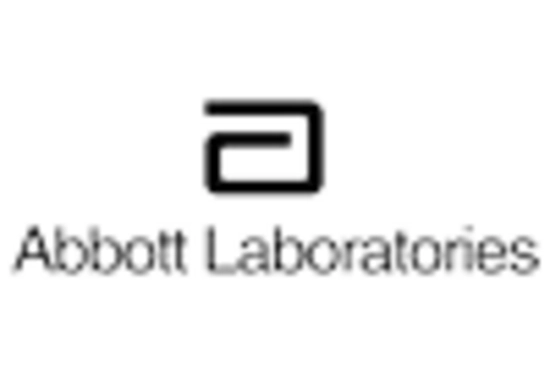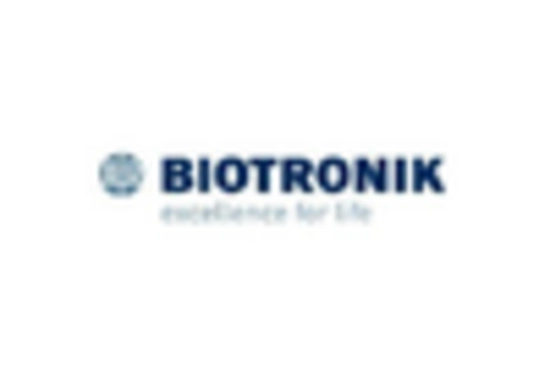-
EXECUTIVE SUMMARY
-
\r\n
-
MARKET INTRODUCTION
-
\r\n
-
Definition
-
\r\n
-
Scope of the Study
- Research Objective
- Assumptions
- Limitations
-
\r\n
-
\r\n
-
\r\n
-
\r\n
-
RESEARCH METHODOLOGY
-
\r\n
-
Overview
-
\r\n
-
Data Mining
-
\r\n
-
Secondary Research
-
\r\n
-
Primary Research
- Primary Interviews and Information Gathering Process
- Breakdown of Primary Respondents
-
\r\n
-
\r\n
-
\r\n
-
Forecasting Application
-
\r\n
-
Market Size Estimation
- Bottom-Up Approach
- Top-Down Approach
-
\r\n
-
\r\n
-
\r\n
-
Data Triangulation
-
\r\n
-
Validation
-
\r\n
-
MARKET DYNAMICS
-
\r\n
-
Overview
-
\r\n
-
Drivers
- Increasing geriatric population
- Growing investments in Cardiac Monitoring
- Rising prevalence of chronic diseases
-
\r\n
-
\r\n
-
\r\n
-
\r\n
-
Restraints
- Data privacy concerns
- Lack of access to adequate internet services in developing regions
-
\r\n
-
\r\n
-
\r\n
-
Opportunities
- XXX
-
\r\n
-
\r\n
-
MARKET FACTOR ANALYSIS
-
\r\n
-
Porter’s Five Forces Analysis
- Bargaining Power of Suppliers
- Bargaining Power of Buyers
- Threat of New Entrants
- Threat of Substitutes
- Intensity of Rivalry
-
\r\n
-
\r\n
-
\r\n
-
\r\n
-
\r\n
-
\r\n
-
Value Chain Analysis
-
\r\n
-
COVID-19 Impact Analysis
- Market Impact Analysis
- Impact on Supply Chain
- Regional Impact
- Opportunity and Threat Analysis
-
\r\n
-
\r\n
-
\r\n
-
\r\n
-
\r\n
-
GLOBAL REMOTE PATIENT MONITORING MARKET, BY TYPE
-
\r\n
-
Overview
-
\r\n
-
Devices
- Blood Glucose Monitoring
- Respiratory Monitoring
- Cardiac Monitoring
- Multi-parameter Monitoring
- Others
-
\r\n
-
\r\n
-
\r\n
-
\r\n
-
\r\n
-
\r\n
-
Services
-
\r\n
-
GLOBAL REMOTE PATIENT MONITORING MARKET, BY APPLICATION
-
\r\n
-
Overview
-
\r\n
-
Cancer Treatment
-
\r\n
-
Cardiovascular Diseases
-
\r\n
-
Diabetes Treatment
-
\r\n
-
Others
-
\r\n
-
GLOBAL REMOTE PATIENT MONITORING MARKET, BY END USER
-
\r\n
-
Overview
-
\r\n
-
Payers
-
\r\n
-
Providers
-
\r\n
-
Patients
-
\r\n
-
GLOBAL REMOTE PATIENT MONITORING MARKET, BY REGION
-
\r\n
-
Overview
-
\r\n
-
North America
- US
- Canada
-
\r\n
-
\r\n
-
\r\n
-
Europe
- Germany
- France
- UK
- Italy
- Spain
- Rest of Europe
-
\r\n
-
\r\n
-
\r\n
-
\r\n
-
\r\n
-
\r\n
-
\r\n
-
Asia-Pacific
- China
- India
- Japan
- South Korea
- Australia
- Rest of Asia-Pacific
-
\r\n
-
\r\n
-
\r\n
-
\r\n
-
\r\n
-
\r\n
-
\r\n
-
Rest of the World
- Middle East
- Africa
- Latin America
-
\r\n
-
\r\n
-
\r\n
-
\r\n
-
COMPANY LANDSCAPE
-
\r\n
-
Overview
-
\r\n
-
Competitive Analysis
-
\r\n
-
Market Share (%) Analysis
-
\r\n
-
Major Growth Strategy in the Global Remote Patient Monitoring market
-
\r\n
-
Competitive Benchmarking
-
\r\n
-
Leading Players in Terms of Number of Developments in the Global Remote Patient Monitoring market
-
\r\n
-
Key developments and Growth Strategies
- New Product Launch/Service Deployment
- Merger & Acquisitions
- Joint Ventures
-
\r\n
-
\r\n
-
\r\n
-
\r\n
-
Major Players Financial
- Sales & Operating Income, 2021
- Major Players R&D Expenditure. 2021
-
\r\n
-
\r\n
-
\r\n
-
COMPANY PROFILES
-
\r\n
-
Koninklijke Philips N.V.
- Company Overview
- Financial Overview
- Products Offered
- Key Developments
- SWOT Analysis
- Key Strategies
-
\r\n
-
\r\n
-
\r\n
-
\r\n
-
\r\n
-
\r\n
-
\r\n
-
Medtronic plc
-
\r\n
-
GE Healthcare
-
\r\n
-
Cerner Corporation
-
\r\n
-
Siemens Healthineers AG
-
\r\n
-
OMRON Healthcare
-
\r\n
-
Boston Scientific Corporation
-
\r\n
-
Abbott Laboratories
-
\r\n
-
Nihon Kohden Corporation
-
\r\n
-
OSI Systems, Inc.
-
\r\n
-
APPENDIX
-
\r\n
-
References
-
\r\n
-
Related Reports
-
\r\n
-
-
\r\n
-
LIST OF TABLES
-
\r\n
-
GLOBAL REMOTE PATIENT MONITORING MARKET SYNOPSIS, 2019–2032
-
\r\n
-
GLOBAL REMOTE PATIENT MONITORING MARKET ESTIMATES & FORECAST, 2019–2032 (USD BILLION)
-
\r\n
-
GLOBAL REMOTE PATIENT MONITORING MARKET, BY TYPE, 2019–2032 (USD BILLION)
-
\r\n
-
GLOBAL REMOTE PATIENT MONITORING MARKET, BY APPLICATION, 2019–2032 (USD BILLION)
-
\r\n
-
GLOBAL REMOTE PATIENT MONITORING MARKET, BY END USER, 2019–2032 (USD BILLION)
-
\r\n
-
GLOBAL REMOTE PATIENT MONITORING MARKET, BY REGION, 2019–2032 (USD BILLION)
-
\r\n
-
NORTH AMERICA: REMOTE PATIENT MONITORING MARKET, BY TYPE, 2019–2032 (USD BILLION)
-
\r\n
-
NORTH AMERICA: REMOTE PATIENT MONITORING MARKET, BY APPLICATION, 2019–2032 (USD BILLION)
-
\r\n
-
NORTH AMERICA: REMOTE PATIENT MONITORING MARKET, BY END USER, 2019–2032 (USD BILLION)
-
\r\n
-
US: REMOTE PATIENT MONITORING MARKET, BY TYPE, 2019–2032 (USD BILLION)
-
\r\n
-
US: REMOTE PATIENT MONITORING MARKET, BY APPLICATION, 2019–2032 (USD BILLION)
-
\r\n
-
US: REMOTE PATIENT MONITORING MARKET, BY END USER, 2019–2032 (USD BILLION)
-
\r\n
-
CANADA: REMOTE PATIENT MONITORING MARKET, BY TYPE, 2019–2032 (USD BILLION)
-
\r\n
-
CANADA: REMOTE PATIENT MONITORING MARKET, BY APPLICATION, 2019–2032 (USD BILLION)
-
\r\n
-
CANADA: REMOTE PATIENT MONITORING MARKET, BY END USER, 2019–2032 (USD BILLION)
-
\r\n
-
EUROPE: REMOTE PATIENT MONITORING MARKET, BY TYPE, 2019–2032 (USD BILLION)
-
\r\n
-
EUROPE: REMOTE PATIENT MONITORING MARKET, BY APPLICATION, 2019–2032 (USD BILLION)
-
\r\n
-
EUROPE: REMOTE PATIENT MONITORING MARKET, BY END USER, 2019–2032 (USD BILLION)
-
\r\n
-
GERMANY: REMOTE PATIENT MONITORING MARKET, BY TYPE, 2019–2032 (USD BILLION)
-
\r\n
-
GERMANY: REMOTE PATIENT MONITORING MARKET, BY APPLICATION, 2019–2032 (USD BILLION)
-
\r\n
-
GERMANY: REMOTE PATIENT MONITORING MARKET, BY END USER, 2019–2032 (USD BILLION)
-
\r\n
-
FRANCE: REMOTE PATIENT MONITORING MARKET, BY TYPE, 2019–2032 (USD BILLION)
-
\r\n
-
FRANCE: REMOTE PATIENT MONITORING MARKET, BY APPLICATION, 2019–2032 (USD BILLION)
-
\r\n
-
FRANCE: REMOTE PATIENT MONITORING MARKET, BY END USER, 2019–2032 (USD BILLION)
-
\r\n
-
ITALY: REMOTE PATIENT MONITORING MARKET, BY TYPE, 2019–2032 (USD BILLION)
-
\r\n
-
ITALY: REMOTE PATIENT MONITORING MARKET, BY APPLICATION, 2019–2032 (USD BILLION)
-
\r\n
-
ITALY: REMOTE PATIENT MONITORING MARKET, BY END USER, 2019–2032 (USD BILLION)
-
\r\n
-
SPAIN: REMOTE PATIENT MONITORING MARKET, BY TYPE, 2019–2032 (USD BILLION)
-
\r\n
-
SPAIN: REMOTE PATIENT MONITORING MARKET, BY APPLICATION, 2019–2032 (USD BILLION)
-
\r\n
-
SPAIN: REMOTE PATIENT MONITORING MARKET, BY END USER, 2019–2032 (USD BILLION)
-
\r\n
-
UK: REMOTE PATIENT MONITORING MARKET, BY TYPE, 2019–2032 (USD BILLION)
-
\r\n
-
UK: REMOTE PATIENT MONITORING MARKET, BY APPLICATION, 2019–2032 (USD BILLION)
-
\r\n
-
UK: REMOTE PATIENT MONITORING MARKET, BY END USER, 2019–2032 (USD BILLION)
-
\r\n
-
REST OF EUROPE: REMOTE PATIENT MONITORING MARKET, BY TYPE, 2019–2032 (USD BILLION)
-
\r\n
-
REST OF EUROPE: REMOTE PATIENT MONITORING MARKET, BY APPLICATION, 2019–2032 (USD BILLION)
-
\r\n
-
REST OF EUROPE: REMOTE PATIENT MONITORING MARKET, BY END USER, 2019–2032 (USD BILLION)
-
\r\n
-
ASIA-PACIFIC: REMOTE PATIENT MONITORING MARKET, BY TYPE, 2019–2032 (USD BILLION)
-
\r\n
-
ASIA-PACIFIC: REMOTE PATIENT MONITORING MARKET, BY APPLICATION, 2019–2032 (USD BILLION)
-
\r\n
-
ASIA-PACIFIC: REMOTE PATIENT MONITORING MARKET, BY END USER, 2019–2032 (USD BILLION)
-
\r\n
-
JAPAN: REMOTE PATIENT MONITORING MARKET, BY TYPE, 2019–2032 (USD BILLION)
-
\r\n
-
JAPAN: REMOTE PATIENT MONITORING MARKET, BY APPLICATION, 2019–2032 (USD BILLION)
-
\r\n
-
JAPAN: REMOTE PATIENT MONITORING MARKET, BY END USER, 2019–2032 (USD BILLION)
-
\r\n
-
CHINA: REMOTE PATIENT MONITORING MARKET, BY TYPE, 2019–2032 (USD BILLION)
-
\r\n
-
CHINA: REMOTE PATIENT MONITORING MARKET, BY APPLICATION, 2019–2032 (USD BILLION)
-
\r\n
-
CHINA: REMOTE PATIENT MONITORING MARKET, BY END USER, 2019–2032 (USD BILLION)
-
\r\n
-
INDIA: REMOTE PATIENT MONITORING MARKET, BY TYPE, 2019–2032 (USD BILLION)
-
\r\n
-
INDIA: REMOTE PATIENT MONITORING MARKET, BY APPLICATION, 2019–2032 (USD BILLION)
-
\r\n
-
INDIA: REMOTE PATIENT MONITORING MARKET, BY END USER, 2019–2032 (USD BILLION)
-
\r\n
-
AUSTRALIA: REMOTE PATIENT MONITORING MARKET, BY TYPE, 2019–2032 (USD BILLION)
-
\r\n
-
AUSTRALIA: REMOTE PATIENT MONITORING MARKET, BY APPLICATION, 2019–2032 (USD BILLION)
-
\r\n
-
AUSTRALIA: REMOTE PATIENT MONITORING MARKET, END USER, 2019–2032 (USD BILLION)
-
\r\n
-
SOUTH KOREA: REMOTE PATIENT MONITORING MARKET, BY TYPE, 2019–2032 (USD BILLION)
-
\r\n
-
SOUTH KOREA: REMOTE PATIENT MONITORING MARKET, BY APPLICATION, 2019–2032 (USD BILLION)
-
\r\n
-
SOUTH KOREA: REMOTE PATIENT MONITORING MARKET, END USER, 2019–2032 (USD BILLION)
-
\r\n
-
REST OF ASIA-PACIFIC: REMOTE PATIENT MONITORING MARKET, BY TYPE, 2019–2032 (USD BILLION)
-
\r\n
-
REST OF ASIA-PACIFIC: REMOTE PATIENT MONITORING MARKET, BY APPLICATION, 2019–2032 (USD BILLION)
-
\r\n
-
REST OF ASIA-PACIFIC: REMOTE PATIENT MONITORING MARKET, BY END USER, 2019–2032 (USD BILLION)
-
\r\n
-
REST OF THE WORLD: REMOTE PATIENT MONITORING MARKET, BY TYPE, 2019–2032 (USD BILLION)
-
\r\n
-
REST OF THE WORLD: REMOTE PATIENT MONITORING MARKET, BY APPLICATION, 2019–2032 (USD BILLION)
-
\r\n
-
REST OF THE WORLD: REMOTE PATIENT MONITORING MARKET, END USER, 2019–2032 (USD BILLION)
-
\r\n
-
MIDDLE EAST: REMOTE PATIENT MONITORING MARKET, BY TYPE, 2019–2032 (USD BILLION)
-
\r\n
-
MIDDLE EAST: REMOTE PATIENT MONITORING MARKET, BY APPLICATION, 2019–2032 (USD BILLION)
-
\r\n
-
MIDDLE EAST: REMOTE PATIENT MONITORING MARKET, END USER, 2019–2032 (USD BILLION)
-
\r\n
-
AFRICA: REMOTE PATIENT MONITORING MARKET, BY TYPE, 2019–2032 (USD BILLION)
-
\r\n
-
AFRICA: REMOTE PATIENT MONITORING MARKET, BY APPLICATION, 2019–2032 (USD BILLION)
-
\r\n
-
AFRICA: REMOTE PATIENT MONITORING MARKET, END USER, 2019–2032 (USD BILLION)
-
\r\n
-
LATIN AMERICA: REMOTE PATIENT MONITORING MARKET, BY TYPE, 2019–2032 (USD BILLION)
-
\r\n
-
LATIN AMERICA: REMOTE PATIENT MONITORING MARKET, BY APPLICATION, 2019–2032 (USD BILLION)
-
\r\n
-
LATIN AMERICA: REMOTE PATIENT MONITORING MARKET, END USER, 2019–2032 (USD BILLION)
-
\r\n
-
LIST OF FIGURES
-
\r\n
-
RESEARCH PROCESS
-
\r\n
-
MARKET STRUCTURE FOR THE GLOBAL REMOTE PATIENT MONITORING MARKET
-
\r\n
-
MARKET DYNAMICS FOR THE GLOBAL REMOTE PATIENT MONITORING MARKET
-
\r\n
-
GLOBAL REMOTE PATIENT MONITORING MARKET SHARE (%), BY TYPE, 2023
-
\r\n
-
GLOBAL REMOTE PATIENT MONITORING MARKET SHARE (%), BY APPLICATION, 2023
-
\r\n
-
GLOBAL REMOTE PATIENT MONITORING MARKET SHARE (%), BY END USER, 2023
-
\r\n
-
GLOBAL REMOTE PATIENT MONITORING MARKET SHARE (%), BY REGION, 2023
-
\r\n
-
NORTH AMERICA: REMOTE PATIENT MONITORING MARKET SHARE (%), BY COUNTRY, 2023
-
\r\n
-
EUROPE: REMOTE PATIENT MONITORING MARKET SHARE (%), BY COUNTRY, 2023
-
\r\n
-
ASIA-PACIFIC: REMOTE PATIENT MONITORING MARKET SHARE (%), BY COUNTRY, 2023
-
\r\n
-
REST OF THE WORLD: REMOTE PATIENT MONITORING MARKET SHARE (%), BY REGION, 2023
-
\r\n
-
GLOBAL REMOTE PATIENT MONITORING MARKET: COMPANY SHARE ANALYSIS, 2023
-
\r\n
-
KONINKLIJKE PHILIPS N.V.: FINANCIAL OVERVIEW SNAPSHOT
-
\r\n
-
KONINKLIJKE PHILIPS N.V.: SWOT ANALYSIS
-
\r\n
-
MEDTRONIC PLC: FINANCIAL OVERVIEW SNAPSHOT
-
\r\n
-
MEDTRONIC PLC: SWOT ANALYSIS
-
\r\n
-
GE HEALTHCARE: FINANCIAL OVERVIEW SNAPSHOT
-
\r\n
-
GE HEALTHCARE: SWOT ANALYSIS
-
\r\n
-
CERNER CORPORATION: FINANCIAL OVERVIEW SNAPSHOT
-
\r\n
-
CERNER CORPORATION: SWOT ANALYSIS
-
\r\n
-
SIEMENS HEALTHINEERS AG: FINANCIAL OVERVIEW SNAPSHOT
-
\r\n
-
SIEMENS HEALTHINEERS AG: SWOT ANALYSIS
-
\r\n
-
OMRON HEALTHCARE: FINANCIAL OVERVIEW SNAPSHOT
-
\r\n
-
OMRON HEALTHCARE: SWOT ANALYSIS
-
\r\n
-
BOSTON SCIENTIFIC CORPORATION: FINANCIAL OVERVIEW SNAPSHOT
-
\r\n
-
BOSTON SCIENTIFIC CORPORATION: SWOT ANALYSIS
-
\r\n
-
ABBOTT LABORATORIES: FINANCIAL OVERVIEW SNAPSHOT
-
\r\n
-
ABBOTT LABORATORIES: SWOT ANALYSIS
-
\r\n
-
NIHON KOHDEN CORPORATION: FINANCIAL OVERVIEW SNAPSHOT
-
\r\n
-
NIHON KOHDEN CORPORATION: SWOT ANALYSIS
-
\r\n
-
OSI SYSTEMS, INC.: FINANCIAL OVERVIEW SNAPSHOT
-
\r\n
-
OSI SYSTEMS, INC.: SWOT ANALYSIS
-
"









Leave a Comment